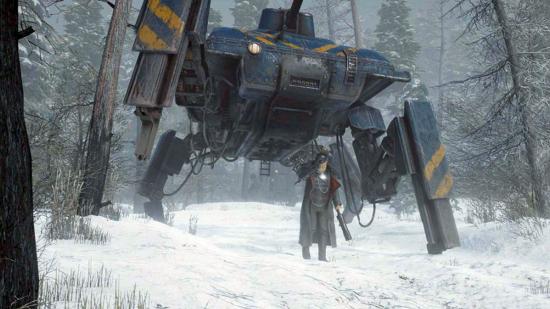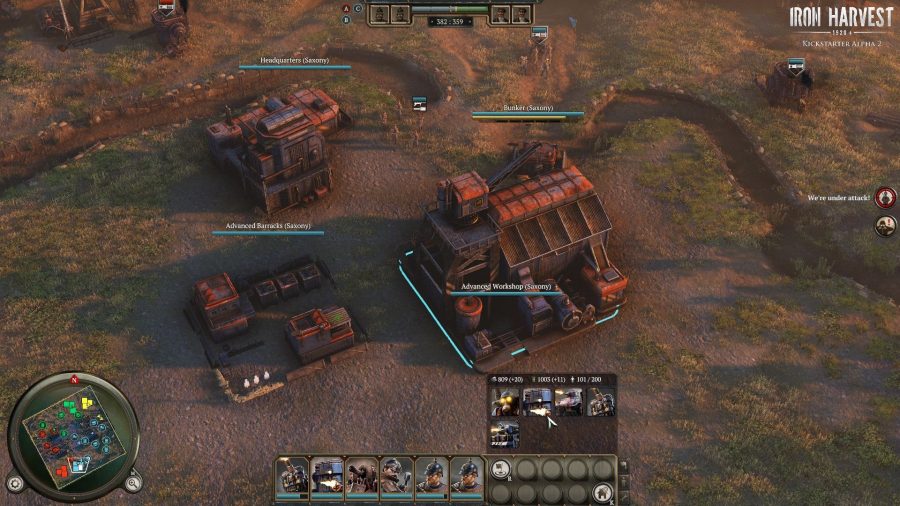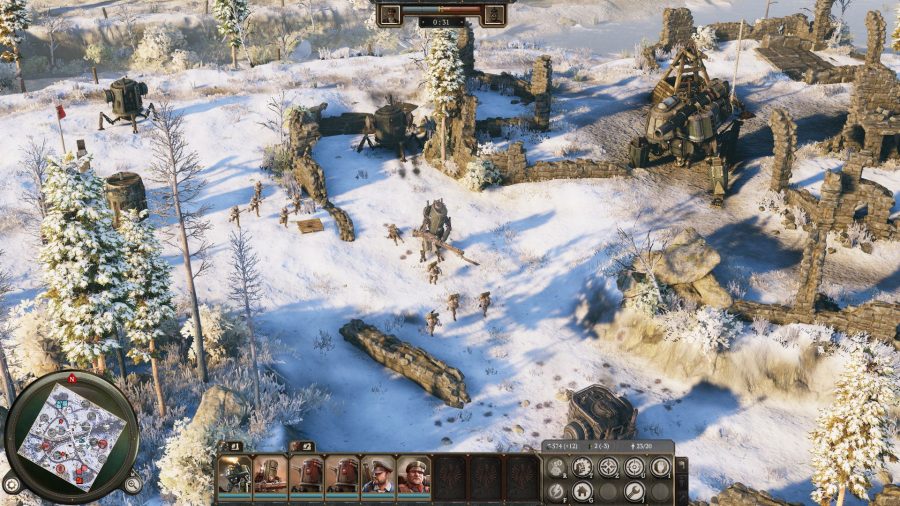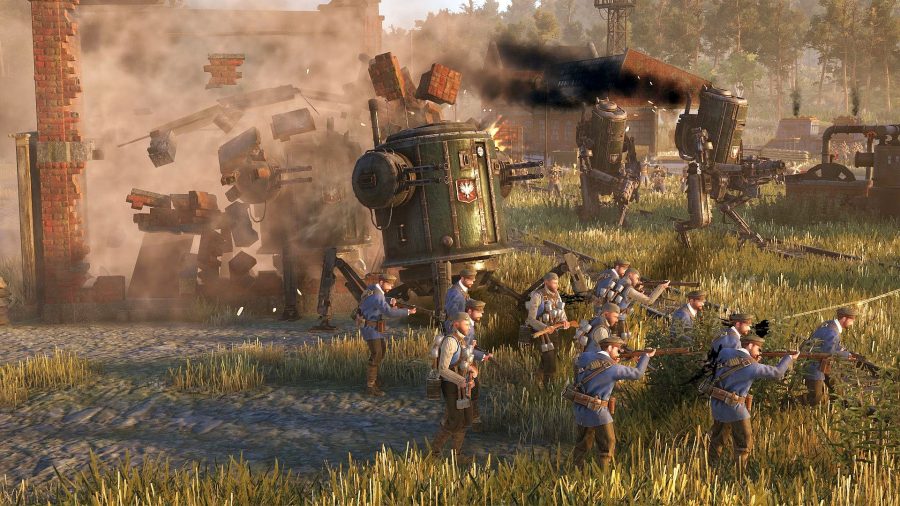Julian Strzoda, executive producer at developer King Art Games, discovered artist Jakub Różalski on the artists’ community ArtStation back in 2015. A real buzz was taking off around Różalski and his vision for the World of 1920+, an alternate universe set around the time of the Polish-Soviet war in which dieselpunk mechs stride across Europe. He was already bringing that vision to life in the form of the popular board game, Scythe, but Strzoda was ready to pitch a digital version, too.
The idea for an RTS was already bubbling away under the surface at King Art Games, the independent German studio behind the 2016 ARPG The Dwarves. That was based on a novel by Markus Heitz, and an example, says Strzoda, that he and his team “really know how to respect the universe of other people.”
After he approached Różalski, the connection was instant, and as he says, “the rest is history.” But it wasn’t just Różalski’s mesmerising landscapes of mechanical warfare that inspired the studio – King Art had wanted to make an RTS for a while because it saw an opportunity.
Strzoda says Iron Harvest will “really focus on the frontline combat,” fondly citing such peers as Company of Heroes and Dawn of War, and the intense challenge they bring to combat when it comes to ordering your troops into cover and sneaking around.

But that’s been done, those games exist, and negativity persists around this genre as with few others. Funny how new RTS games keep coming out despite the diagnosis that the genre had died, isn’t it? Especially if you count remasters.
There’s clearly a challenge in bringing the genre into 2020. Strzoda talks of “speeding up the process” to “give the player reasons to go out into the map and cache resources to build up an economy,” but some pillars of the genre must remain – according to the many backers in the game’s successful Kickstarter campaign at least, who “always asked us to have base building”. Indeed, Strzoda is keen to walk back some of the steps that the RTS’s successors have taken, insisting that he doesn’t want to imitate Dota and League of Legends in rewarding clicks per second. “We’re not the youngest people anymore.” I nod, relating.
Related: our last interview with the Iron Harvest developer
“One of the most important evolutions that we have is the real-time destruction system,” Strzoda says. “We’re able to have complete physical simulation of buildings collapsing, and this is something really unique to our game.” I can tell. My army dwindles in number as I lead it across the map, but grows in lethality. I acquire a stash of grenades and capture a gun turret, which trundles slowly behind us as I assign a team to drag it along.
This means I can wipe out buildings and destroy enemy cover, but just as importantly, I can destroy my own. I need to be judicious with this fearsome power: environmental destruction in Iron Harvest can open new paths for my army create new obstacles for the enemy, or expose my allies to attack from new directions. Strzoda calls it “the next generation of real-time strategy.”
For more cunning planning: see the best strategy games on PC
Another throwback that’s been promised is a rich story campaign for each faction. I played that of Anna, hero of the Poland-analagous Polania Republic, and the introduction to the setting was very touching. The tutorial mission shows me Anna as a young girl, trying to join in a snowball fight with a group of boys. This was a great, low-pressure introduction to the controls and mechanics of the game – learning how to shoot, retreat, use my special abilities, and take cover. I learn to use a rifle on a hunting trip with Anna’s brother, but as he herds a deer towards my hiding spot in a bush, we’re suddenly attacked by a bear. After a clumsy fumble with the controls I bring it down, and there’s a glimpse into Anna’s tender heart: she is distressed as she harvests the guts of the fallen deer to return to the village for dinner. This is not my last notice that Anna doesn’t like killing – and this is not my last bear, either, though the next is a lot nicer than the first.
It’s an adorable cub, which Anna immediately adopts as her pet, naming him Wojtek. The two grow up together, and of course Wojtek is there to follow Anna into battle when it all kicks off many years later. I’m surprised to hear that King Art’s decision to include the loveable creature was inspired not by a Kickstarter survey calling for animal units, but was actually based on a real-life bear, also named Wojtek, who was bought by soldiers of the Polish II Corps during WWII.
Given all this history, I’m struck with sadness when I manage to get Wojtek killed in battle. How can I continue? How can I go on? How can I conquer an army without my killer bear? Answer: Anna has an ability to revive Wojtek, and once again all is right with the world.
Relationships like this add a lot of heart to Iron Harvest, which is important in a genre based on guiding faceless units around a map. It’s apparent that King Art Games’ background is in point-and-click adventure games and telling stories, and Strzoda confirms “that’s where our heart is.” As the studio behind The Book of Unwritten Tales and The Raven, he says “we really want to bring that feeling back that you really care for your heroes and characters.”
And I do care about Anna and Wojtek. There’s a lot of condescending talk of her being ‘just a girl’, which follows her from childhood to adulthood, when it evolves into ‘a girl can’t lead.’ But Anna remains unphased and resilient, desperate to find her dad and protect her village, reluctantly wiping out threatening soldiers from industrialised expansionist Rusviet with an army that can’t help but flock to her, slowly but surely – even though she’s just a girl.



